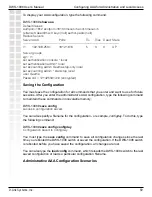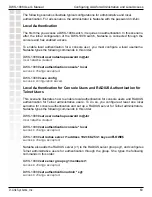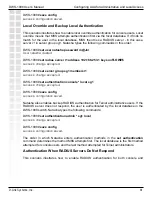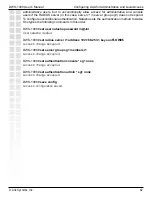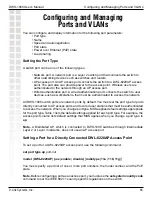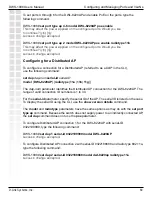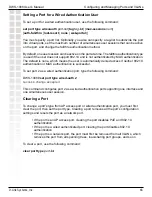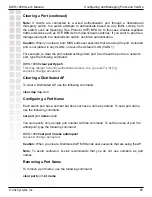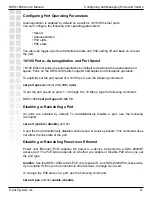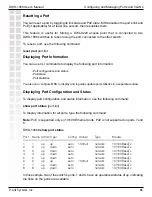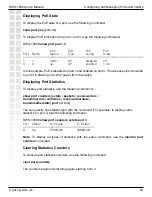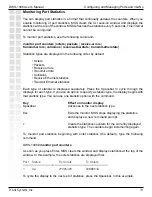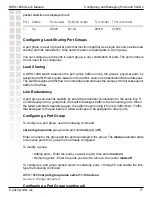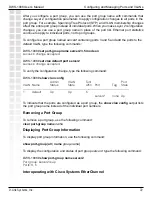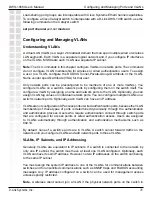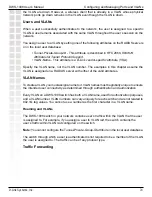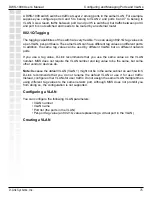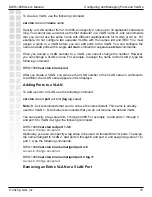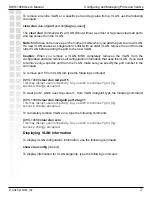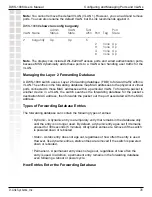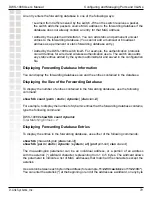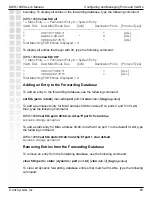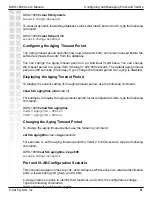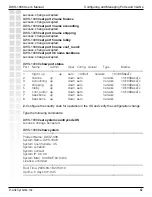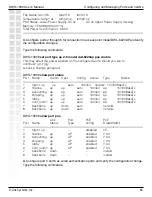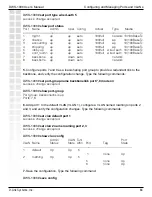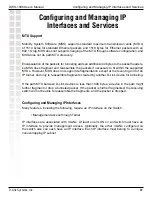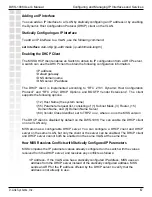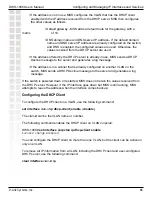
73
DWS-1008 User’s Manual
D-Link Systems, Inc.
Configuring and Managing Ports and VLANs
Load-sharing port groups are interoperable with Cisco Systems EtherChannel capabilities.
To configure a Cisco Catalyst switch to interoperate with a D-Link DWS-1008 switch, use the
following command on the Catalyst switch:
set port channel
port-list
mode on
Configuring and Managing VLANs
Understanding VLANs
A virtual LAN (VLAN) is a Layer 2 broadcast domain that can span multiple wired or wireless
LAN segments. Each VLAN is a separate logical network and, if you configure IP interfaces
on the VLANs, MSS treats each VLAN as a separate IP subnet.
Note:
The CLI commands in this chapter configure VLANs on network ports. The commands
do not configure VLAN membership for wireless or wired authentication users. To assign
a user to a VLAN, configure the RADIUS Tunnel-Private-Group-ID attribute or the VLAN-
Name vendor specific attribute (VSA) for that user.
Only network ports can be preconfigured to be members of one or more VLAN(s). You
configure VLANs on a switch’s network ports by configuring them on the switch itself. You
configure a VLAN by assigning a name and network ports to the VLAN. Optionally, you can
assign VLAN tag values on individual network ports. You can configure multiple VLANs on a
switch’s network ports. Optionally, each VLAN can have an IP address.
VLANs are not configured on AP access ports or wired authentication ports, because the VLAN
membership of these types of ports is determined dynamically through the authentication
and authorization process. Users who require authentication connect through switch ports
that are configured for access points or wired authentication access. Users are assigned
to VLANs automatically through authentication and authorization mechanisms such as
802.1X.
By default, none of a switch’s ports are in VLANs. A switch cannot forward traffic on the
network until you configure VLANs and add network ports to those VLANs.
VLANs, IP Subnets, and IP Addressing
Generally, VLANs are equivalent to IP subnets. If a switch is connected to the network by
only one IP subnet, the switch must have at least one VLAN configured. Optionally, each
VLAN can have its own IP address. However, no two IP addresses on the switch can belong
to the same IP subnet.
You must assign the system IP address to one of the VLANs, for communications between
switches and for unsolicited communications such as SNMP traps and RADIUS accounting
messages. Any IP address configured on a switch can be used for management access
unless explicitly restricted.
Note.
A wireless client cannot join a VLAN if the physical network ports on the switch in

